Blacklighting for Queens – some thoughts after a years’ practice
I don’t relish being up all night, so I have tried since last year to come up with a reliable ‘ant trap’ like I’ve seen a lot of others doing – thanks for the inspiration from the various ideas. This is what I settled on in 2021 as the ‘best’ in terms of catching and keeping ants overnight.
I tried a mercury vapor bulb last year but those light up the whole backyard and attract more beetles and moths than ants for whatever reason. Expensive, hot, dangerous, and absolutely not waterproof. Basically useless in the Southeast US on that last point. You have got to have a setup here in the East that can deal with the inevitable overnight rain/storms.
I use this combo:
A 56 liter or whatever large size gray plastic Sterilite bin is the base. Get at Target/Walmart. Cheap.
Put that under something high - I use the railing of my deck and put the bucket on the ground below, with the LED bulb up top and the string draped over the railing and almost all the way down into the bucket - so things that hit just run down and hide in the layers, like this -
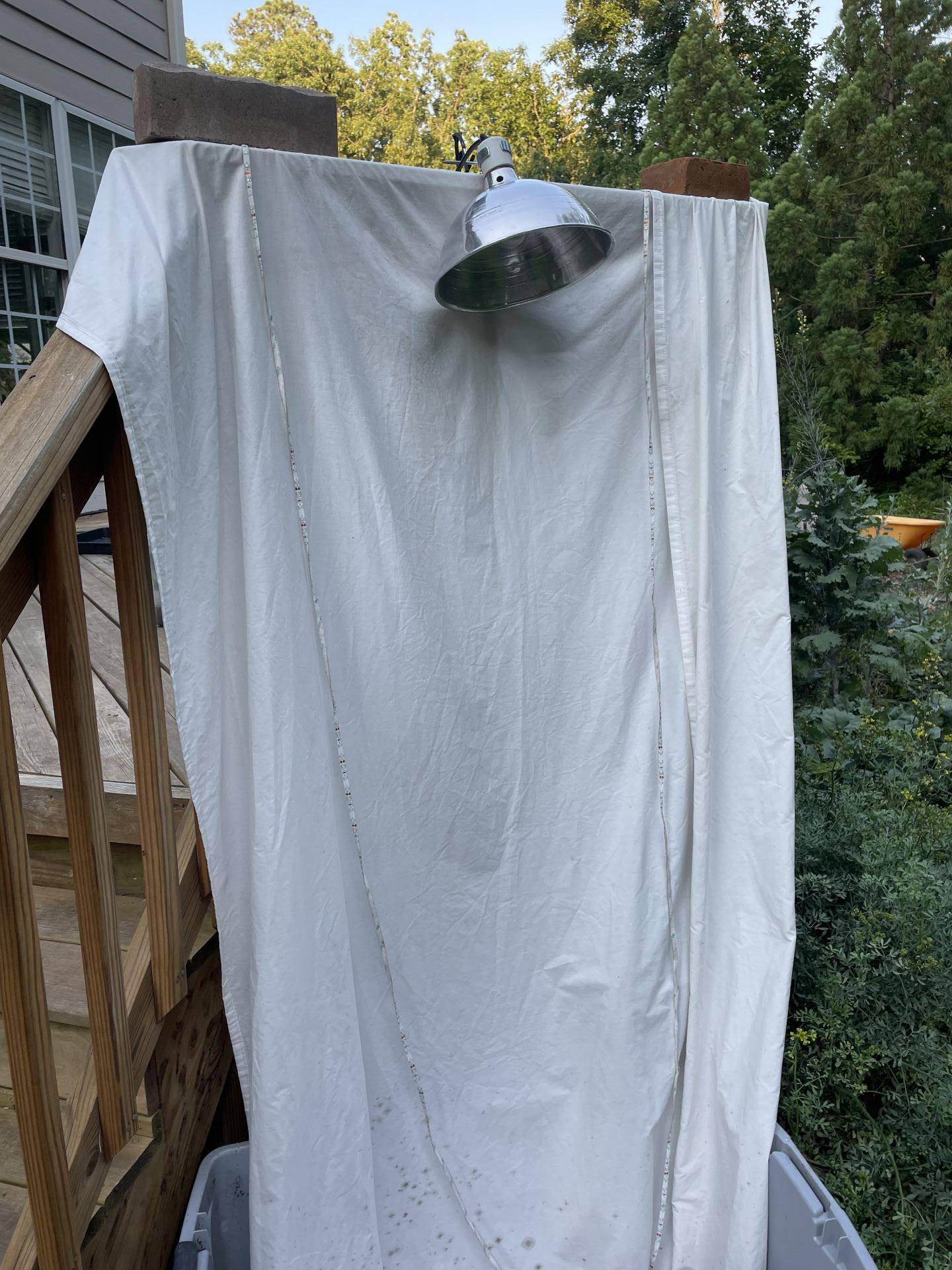
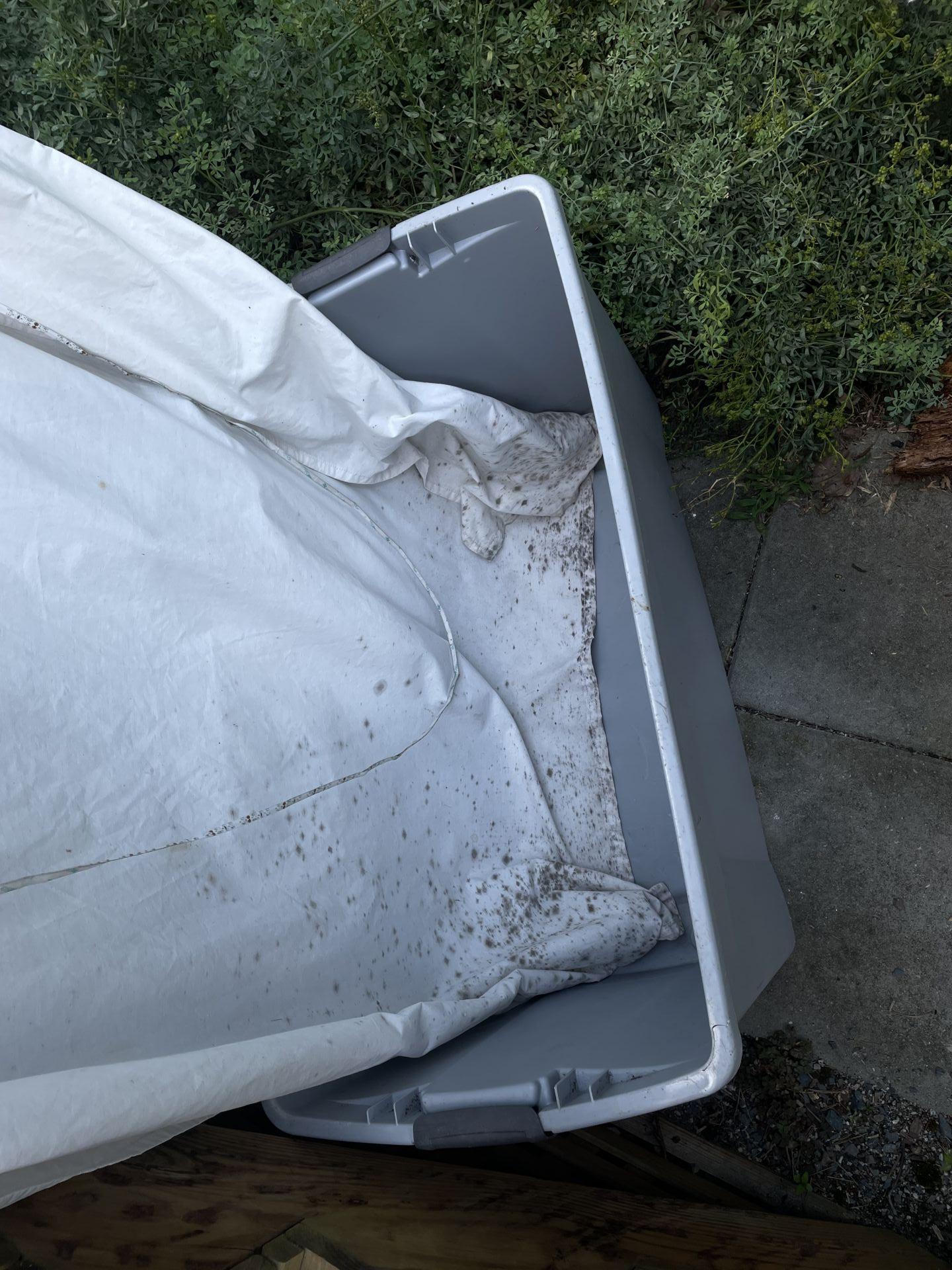
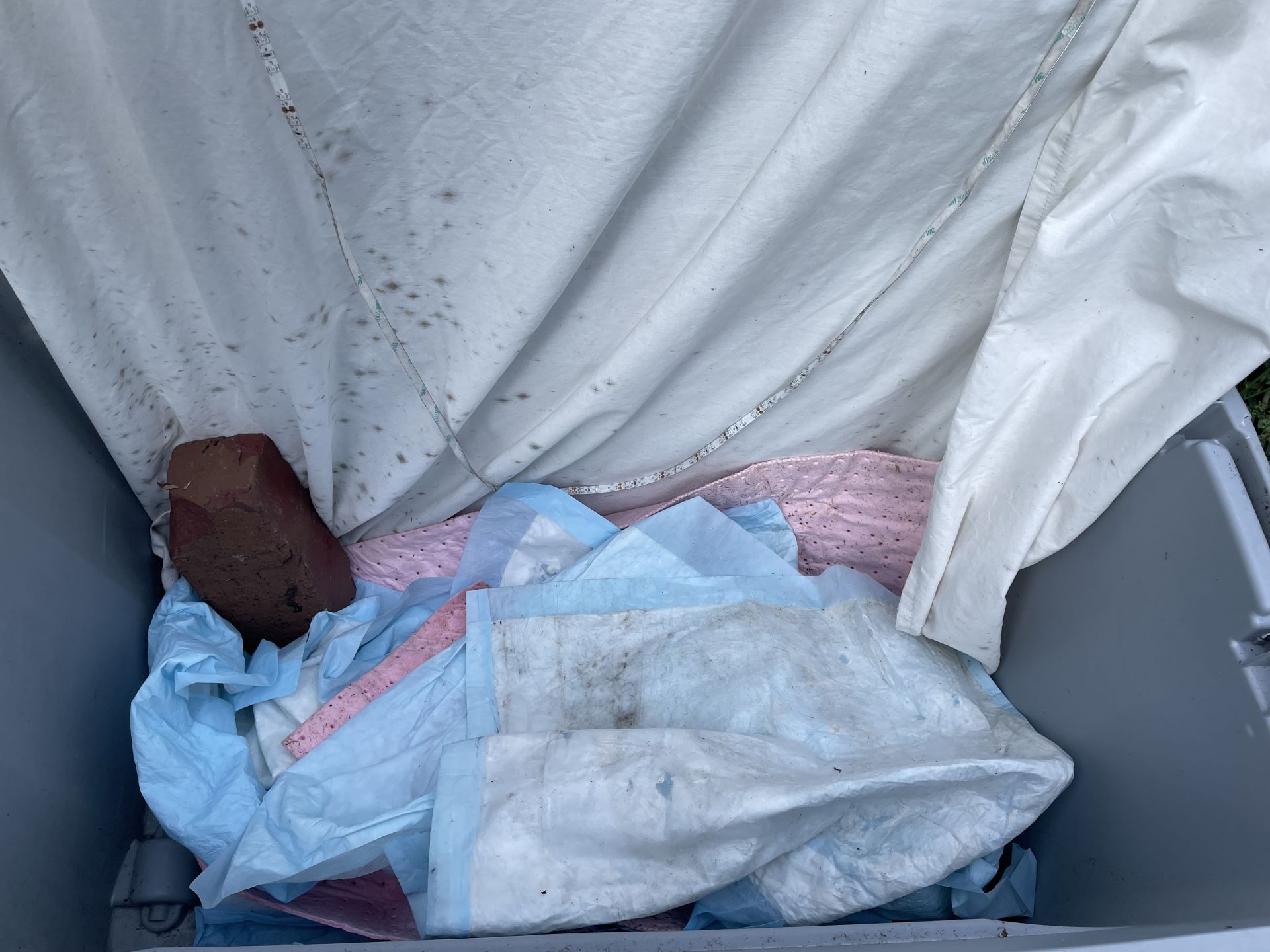
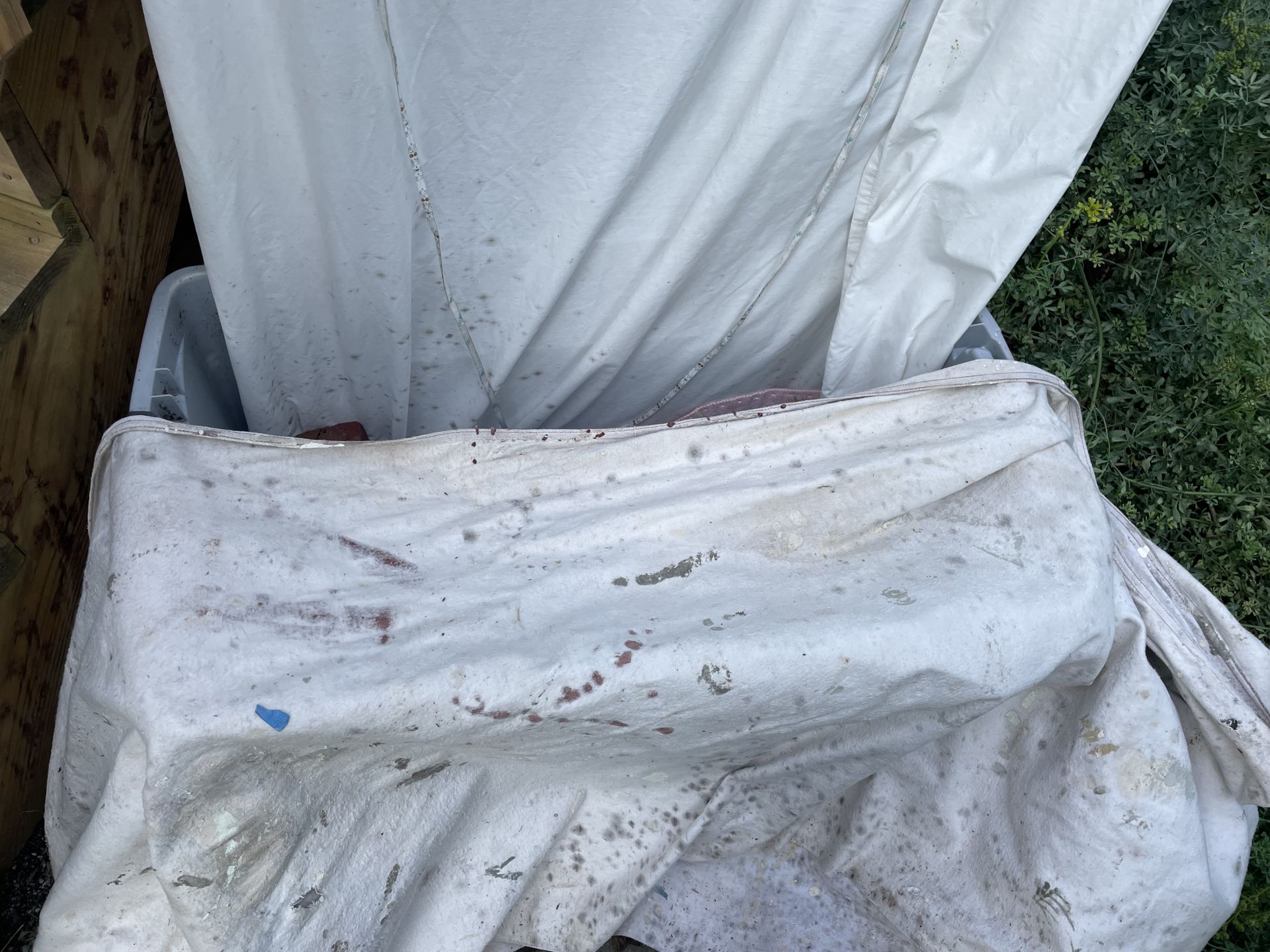
A twin bed white sheet.
An outdoor rated power cord (length to your needs).
A splitter or some other method of connecting two lights to your power cord.
An outdoor rated standard light bulb hood.
In the bottom of the plastic bin – line this with whatever you have that’s absorbent. I’ve settled on absorbent pads and the like because they don’t mold for a really long time even when damp, but I’ve also used bath/kitchen towels (this displeases the spouse because they mildew after a while), crunkled up paper (turns to mush, not recommended), cut up cardboard boxes (longer to mush, but ultimately, still mush), etc. etc. etc. It’s just important that you have something absorbent (in case it rains) and that is in stacks or layers (so ants can find hiding places – you want them to stay in the bin). I aim for not less than 15-20 layers, more is better. This matters – some ants are almost always at the bottom, like Pheidole tysoni and Aphaenogaster – and if there are only a few layers they never stay - see here in the bottom corner under all the stuff:
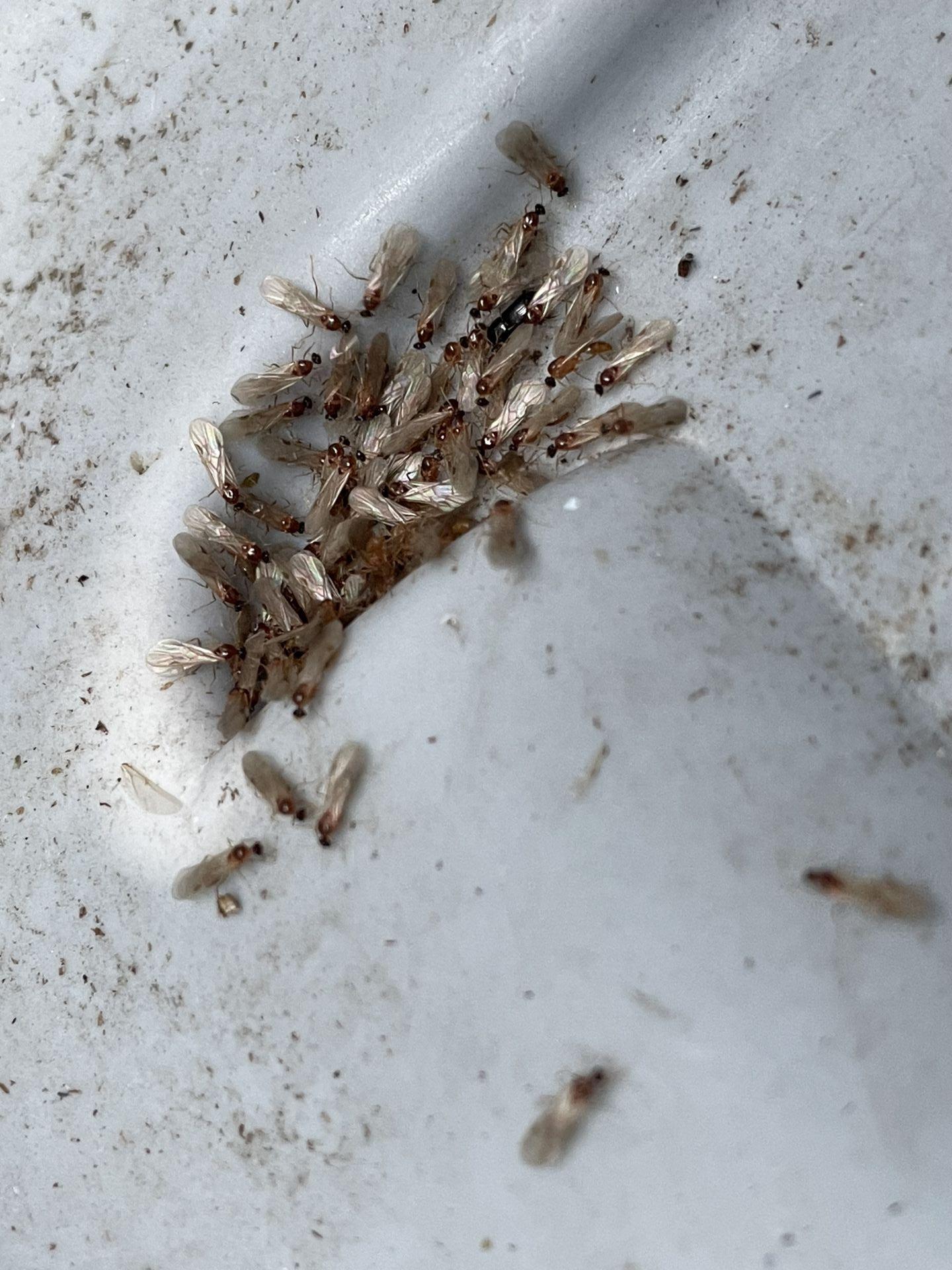
A 365 nm LED – best to try not to look at it, it gives off a pretty dim light (as it should). As soon as I turn this on, insects show up within less than a minute. If you are going to manually work your light, get a pair of UV safety googles at the hardware store and keep those on while this bulb is in front of you, they will reduce your exposure big time. I’ve never had one but a sunburn on your eyeballs is probably not swell.
Link to the one I buy - https://www.amazon.c...F9NJSB6C7HMH0H1
A 395-405 nm LED strip – make sure you get the waterproof one that’s got the LEDs wrapped in silicone or similar or it’ll cook on the first foggy night never mind an actual rain storm. JUNWEN BlackLights LED Rope Strip Lights, 110V Outdoor Black Lights Kit, Waterproof 432LEDs 40FT Flexible Purple Rope Light for Birthday Halloween Stage Fluorescent Dance Party Home Decoration - - Amazon.com. Again - be safe. Don't stare at it without eye protection.
Note that neither of these are super bright, so you’ll want a white light flashlight if you will work the light manually (meaning you are watching in person waiting for queens).
I use an outdoor rated power cord that’s plugged in in my kitchen and run out onto my deck. I siliconed the heck out of the lamp fixture too, to ensure almost no moisture can get in by the cord at the top. I also have this cheapo plastic cookie tub as a hub for the cords to keep rain off - I cut a hole in the side, ran all the cords in one by one, then plugged it in once it was all inside:
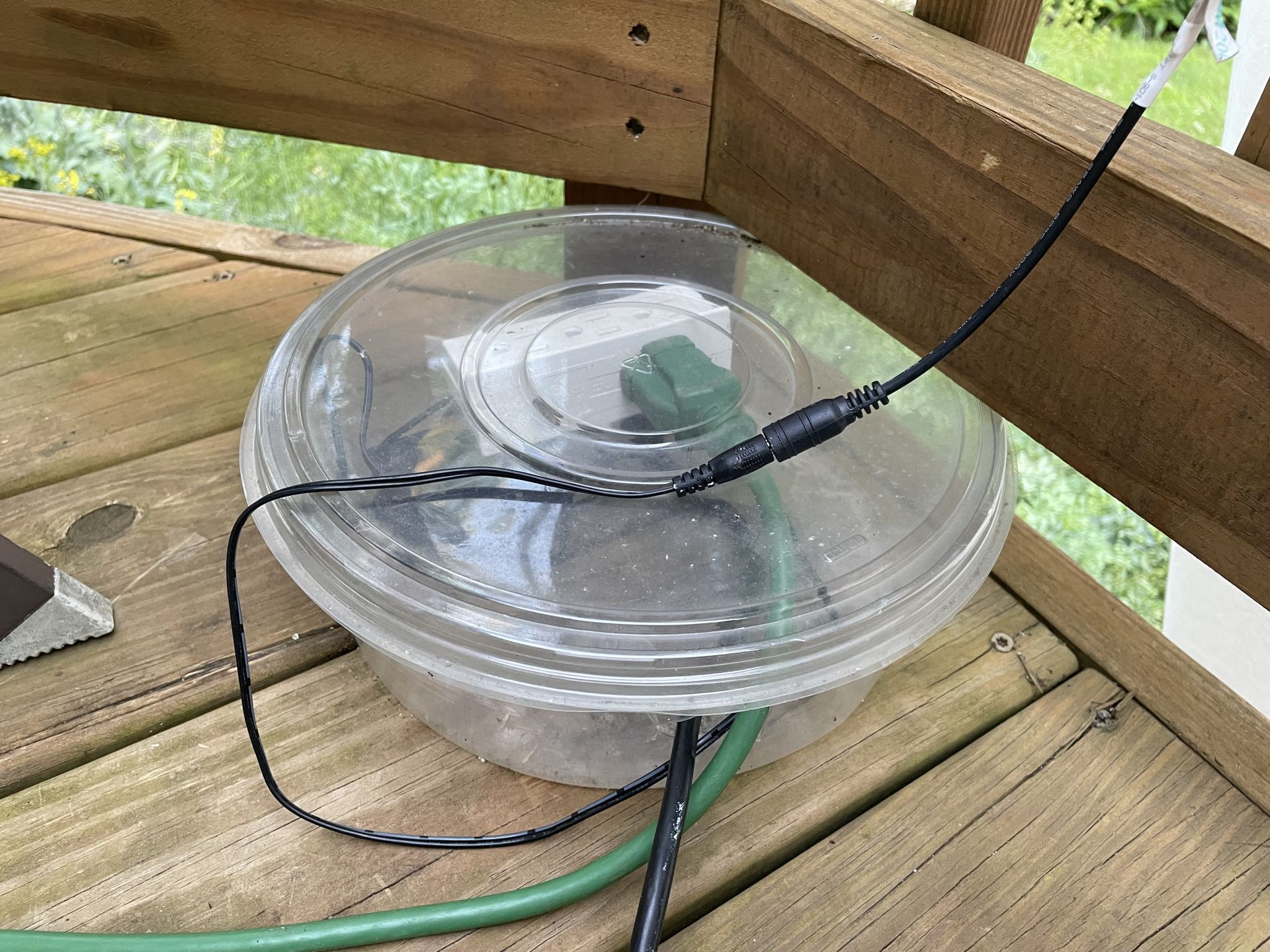
This trap keeps a lot of stuff – I’ve captured at least one fertile queen of:
Camponotus pennsylvanicus, Camponotus nearcticus, Colobopsis (two species), Temnothorax ambiguus, Temnothorax pergandei, Temnothorax curvispinosus, Tetramorium, I can’t even tell how many species of teeny weeny Solenopsis and even the occasional fire ant complex queen (latter always fed to my Sarracenia) Pheidole bicarinata, Phe. tysoni, Phe. dentigula, Phe. dentata, Pseudomrymex, Brachymyrmex, Lasius americanus, Aphaenogaster fulva and A. rudis, various Crematogaster (one type in the summer, one in the fall), and I probably forgot some. There’s a metric you-know-what-load of things that come to the light in ones and twos that I don’t bother to ID.
In some cases the number of female, dealate animals of one of these species during a prime flight, that remain in the bin in the morning is more than 100. No foolin'. This happens all the time with Brachymyrmex and Aphaenogaster.
Happy Anting!

















